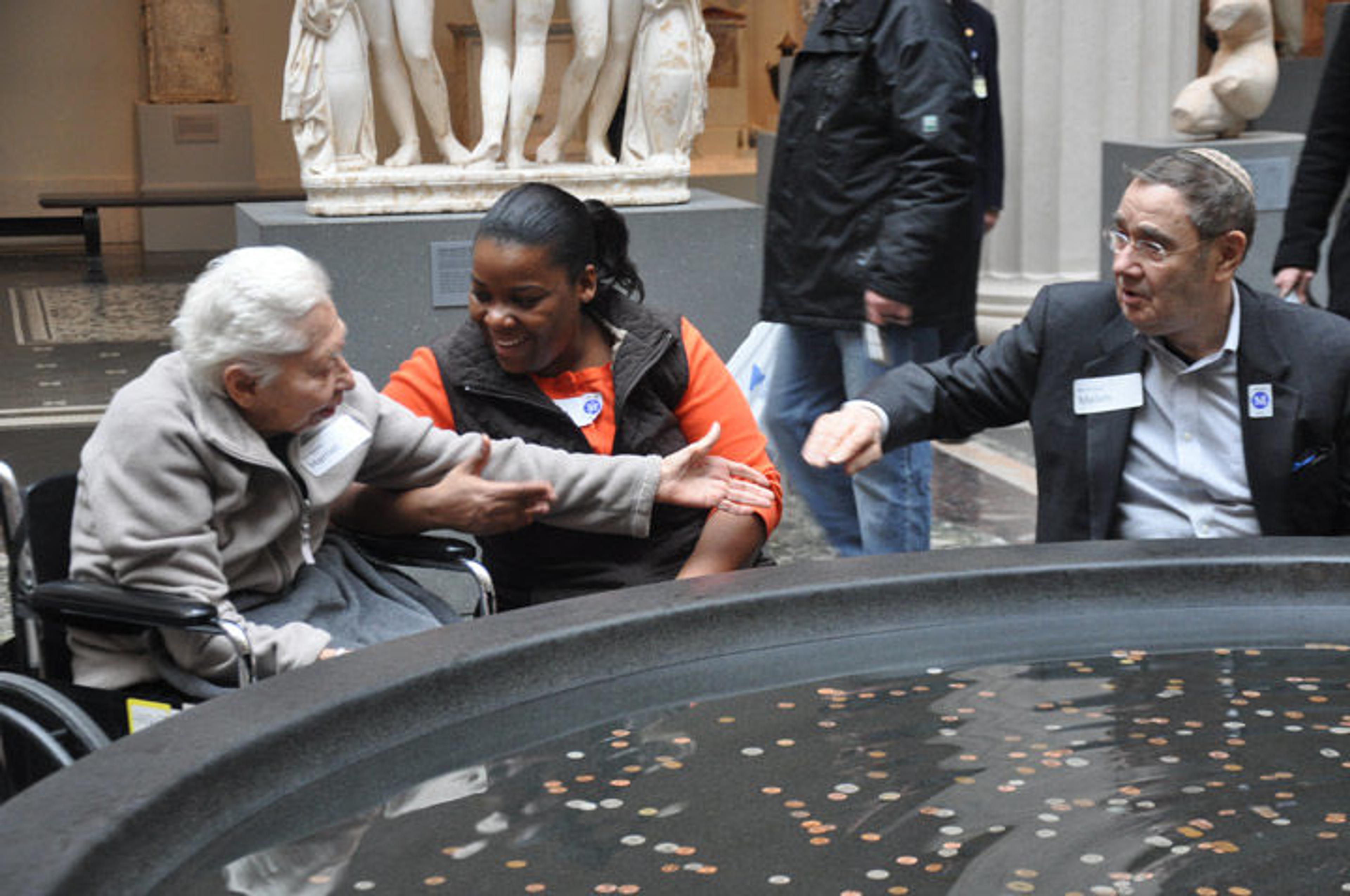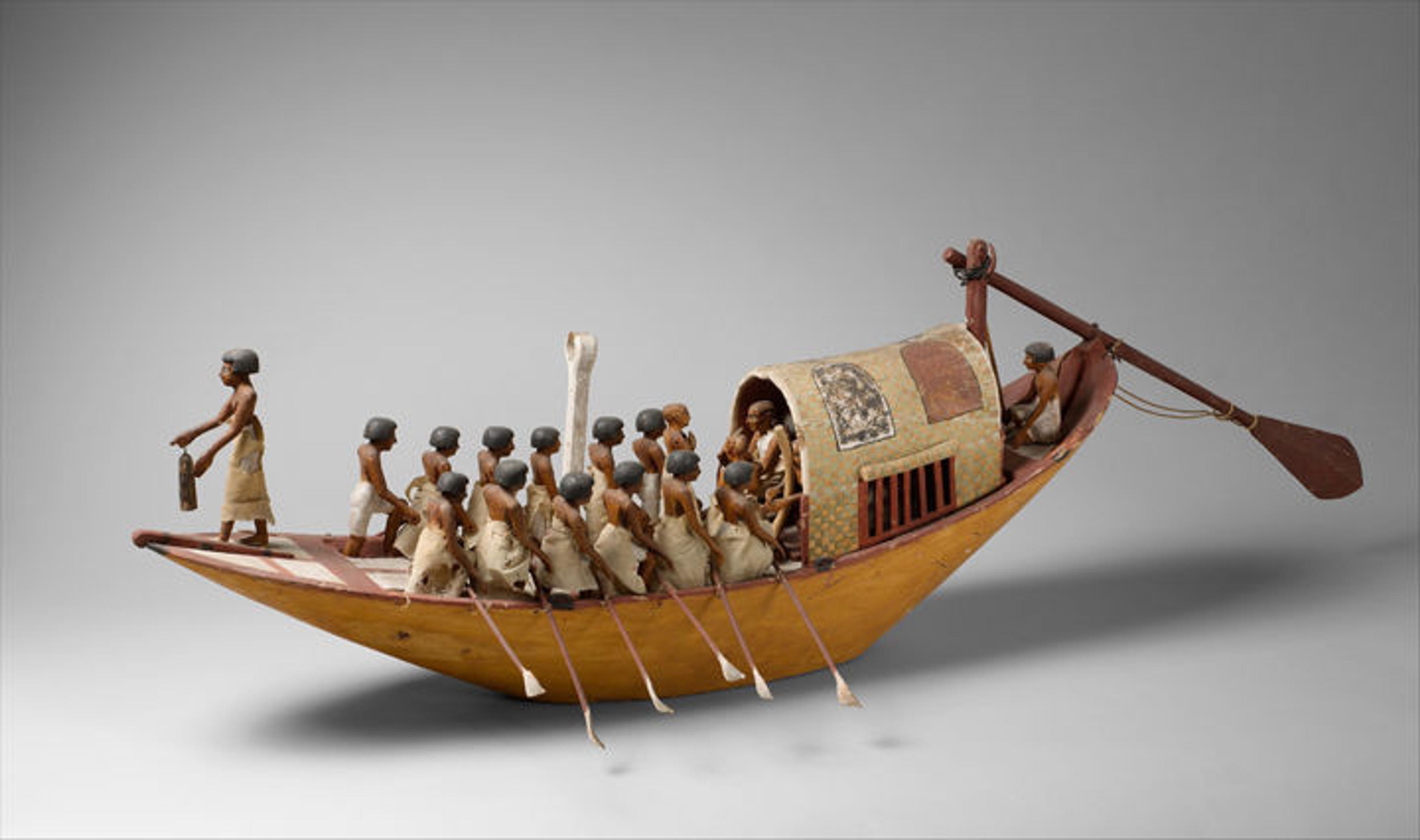
Visitors making connections and having fun at Met Escapes. Photo by Deborah Jaffe
«As a teenager with cerebral palsy, I have always had a keen interest in the variety of access programs offered at The Met. When I became a high school intern, I began assisting with these programs, and one that stood out to me was Met Escapes. Met Escapes invites individuals with dementia and their family members or care partners to join discussions, handling sessions, art making, and other interactive and multisensory activities in The Met's galleries and classrooms. »
I attended a Met Escapes Gallery Tour, where I was joined by a group of older women and their care partners. Though the women did not speak much, they all showed great interest in the art. They became more expressive and alert whenever our tour guide pointed out an artwork to them, and smiled as they tried to understand the various works.
We spent the entirety of our tour in the Egyptian Art galleries, and for the first part, we focused on a model of a riverboat from about 4,000 years ago. Our tour guide shared the history of that boat and the people on it, and asked the group questions about what they thought was going on. Though the care partners answered many of the questions, the answers from those with dementia were insightful and entertaining.

Travelling boat being rowed, Middle Kingdom, Dynasty 12 (ca. 1981–1975 B.C.). Egypt. Wood, paint, gesso, linen twine and linen fabric; L. 128 cm (50 3/8 in.), with rudder 175 cm (68 7/8 in.) x W. with oars 30.5 cm (12 in.) x H. 37 cm (14 9/16 in.). The Metropolitan Museum of Art, New York, Rogers Fund and Edward S. Harkness Gift, 1920 (20.3.1)
I remember one woman telling the group a story of how she and her husband had traveled to Egypt many years ago and how enjoyable they had found it. The story brought a smile to everyone's face, including mine. This was the exact moment that changed my notions about those with dementia. Prior to this tour, I had pictured people with dementia as nonverbal people who just went through the motions in life. On this tour, I encountered women who were very intelligent, mentally active, and even humorous. Though my impression continued to change throughout the tour, this one story was the catalyst.
This was my first Met Escapes tour, and I had a lot of fun. More importantly, the women with dementia seemed to like it. They were responsive, alert, and wanted to learn more about every piece we came across. The tour gave me greater insight into the mental workings of those with dementia and changed my perception of them as well.
Interested in learning more? Check out the full range of programs for visitors with disabilities. If you are a high school student interested in assisting with this sort of program, find out more about the High School Internship Program.